If you’ve ever gazed upon the majestic leaves of a Monstera deliciosa, you’ve likely been captivated by their unique and intricate patterns. The process behind these enchanting leaves is known as fenestration, and it’s a fascinating blend of botany and beauty. Let’s dive into the world of Monstera deliciosa and explore the wonders of fenestration.
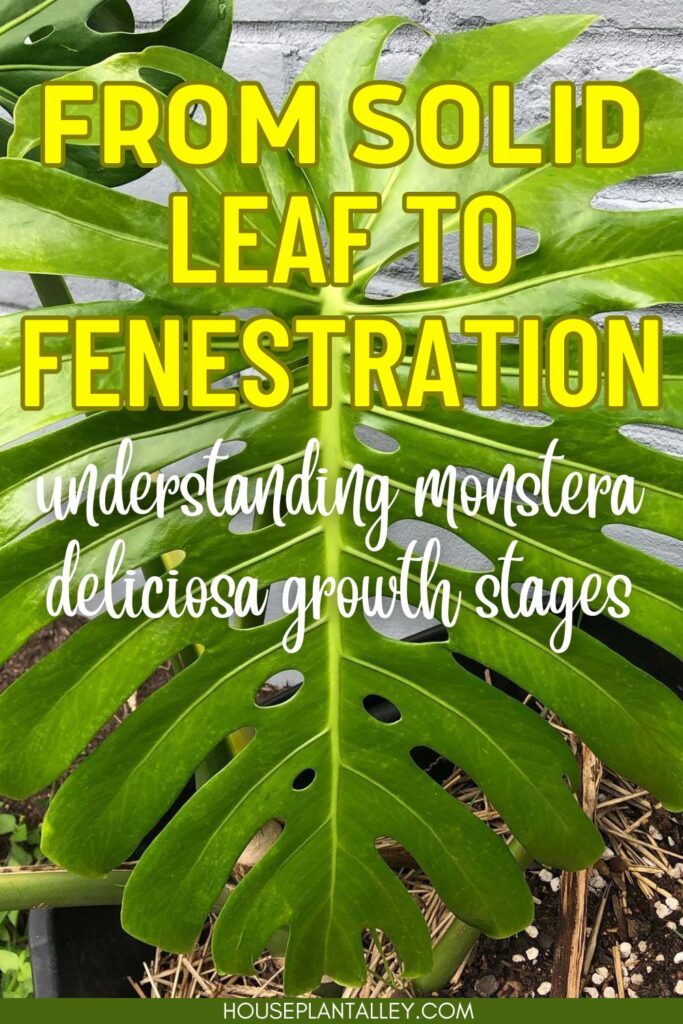
Contents
The Journey Begins: Young Monstera
Monstera deliciosa, often referred to as the Swiss Cheese Plant or Split-Leaf Philodendron, starts its life with solid, heart-shaped leaves. These early leaves are unblemished by the characteristic holes and slits that will later define their appearance. It’s hard to believe that these simple leaves hold the potential for such transformation.
The Magic of Fenestration
Fenestration is the process by which Monstera deliciosa leaves develop holes and splits as they mature. This transformation isn’t just a random act of nature; it’s a remarkable adaptation to the plant’s environment. Let’s break down the stages of fenestration:
Solid Heart Leaf: In the initial stage, the leaves are whole and undivided. Young Monsteras display a perfect, solid heart shape.
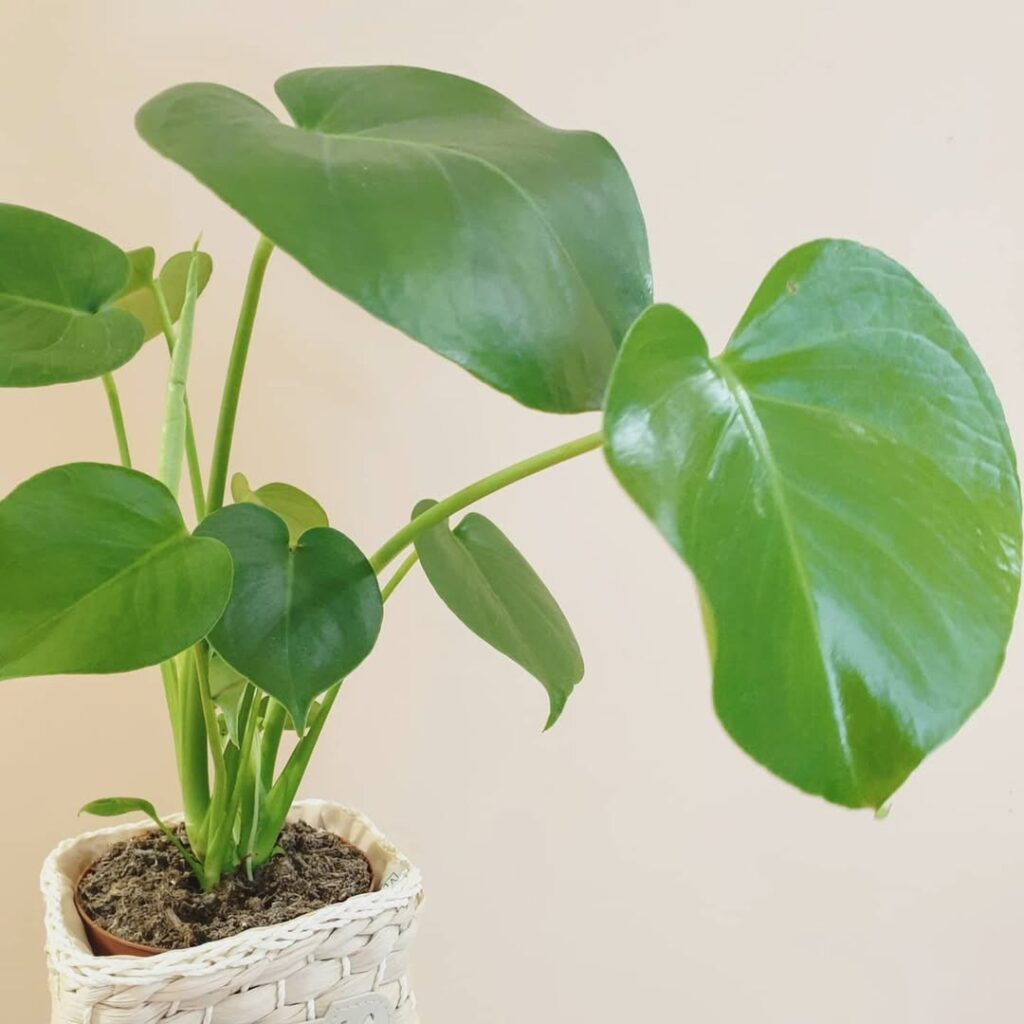
Side Slits: As the plant grows, the first signs of fenestration appear as slits along the edges of the leaves. These slits usually start near the base and gradually extend towards the tip.
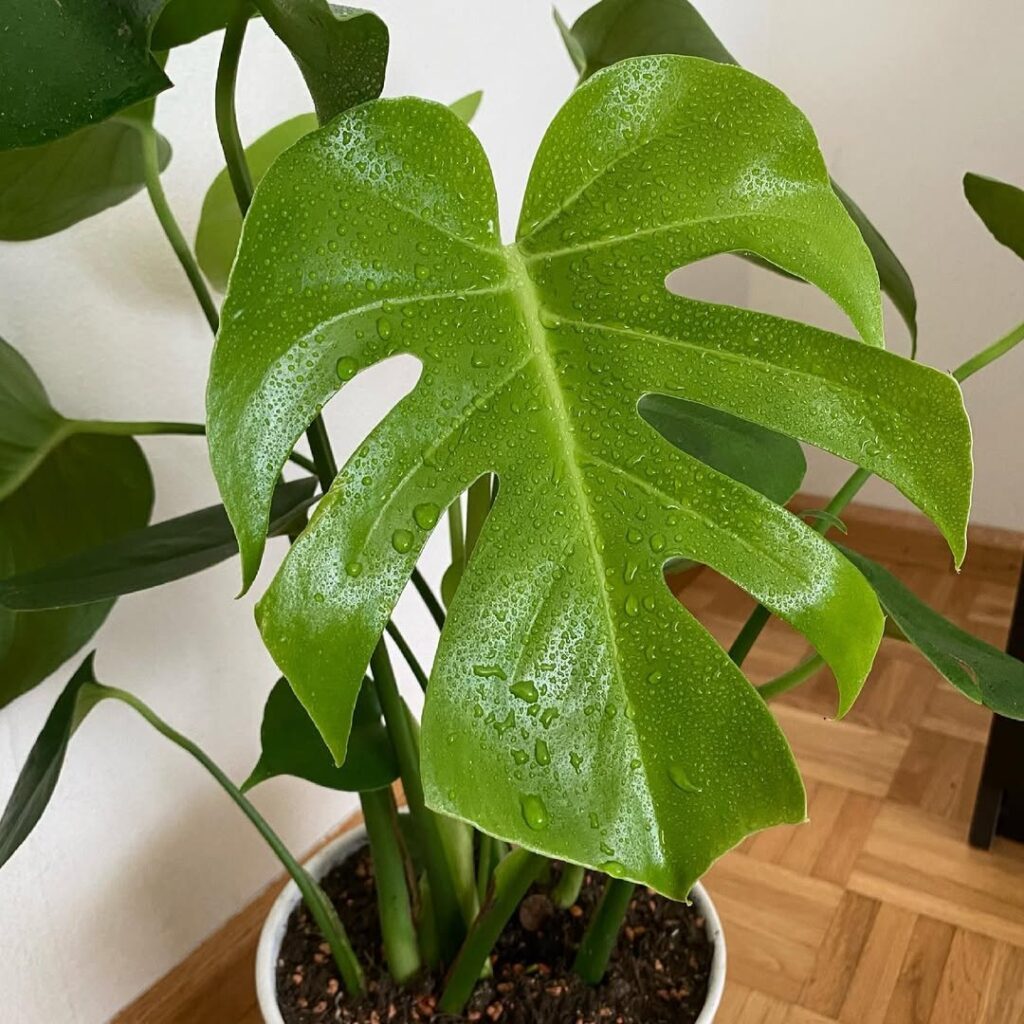
Primary Midrib Holes: The next stage introduces holes along the primary midrib of the leaf. These holes are the plant’s first attempt at creating a more complex and efficient leaf structure.
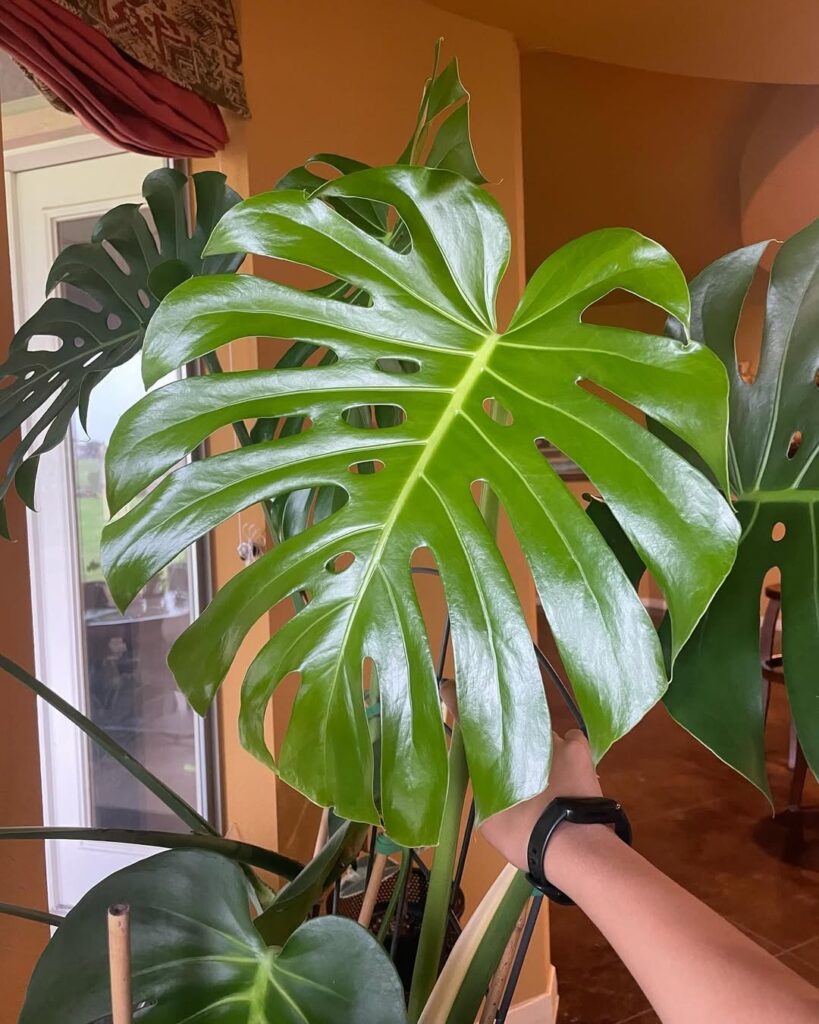
Secondary Midrib Holes: As the leaves continue to mature, secondary holes form parallel to the lateral veins. These additional holes increase the leaf’s fenestration and add to its intricate design.
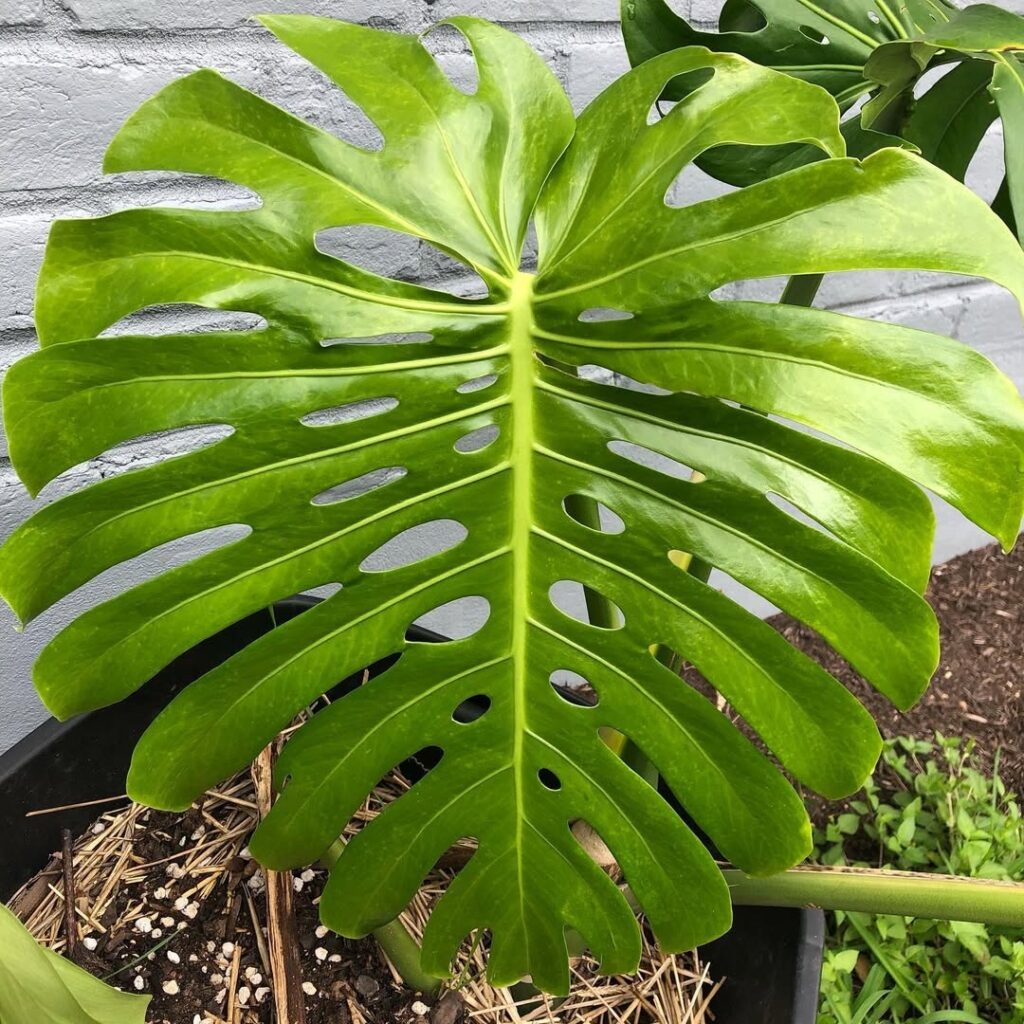
Tertiary Midrib Holes: In the final stage of fenestration, the leaves develop a third set of holes closest to the midrib. These leaves are the pinnacle of maturity, showcasing a beautiful array of splits and holes.
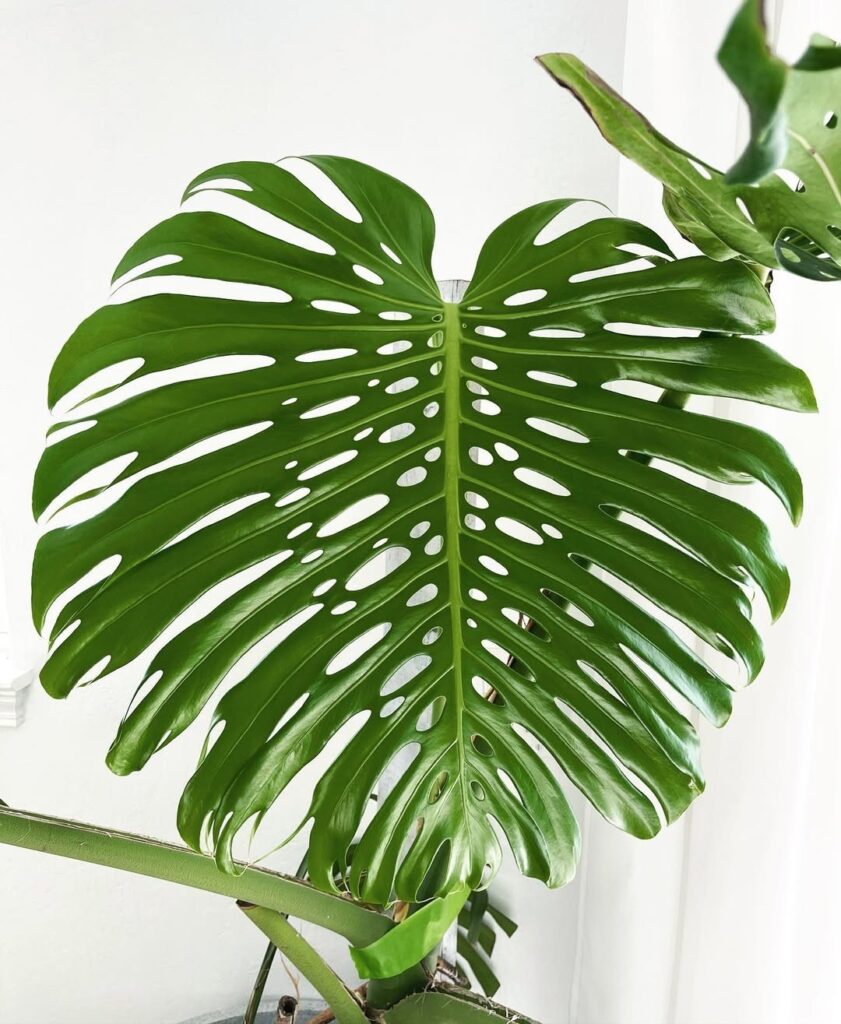
Why Fenestration Matters
The fenestration process serves several practical purposes for the Monstera deliciosa. One of the primary reasons is to allow light to pass through to the lower leaves. In their native habitat of dense rainforests, this adaptation helps the plant capture more sunlight, essential for photosynthesis. The holes also reduce the risk of wind damage by allowing air to flow through the leaves more easily.
Another theory suggests that the splits and holes mimic the appearance of damaged or insect-eaten leaves, deterring herbivores from feasting on the plant. While this hypothesis is still debated, it adds another layer of intrigue to the fenestration phenomenon.
Caring for Your Monstera
Understanding the fenestration process can help Monstera owners provide the best care for their plants. Here are a few tips to ensure your Monstera deliciosa thrives and develops beautiful fenestrated leaves:
- Light: Monsteras prefer bright, indirect light. While they can tolerate lower light conditions, insufficient light can slow down the fenestration process. Place your Monstera near a window with filtered sunlight for optimal growth.
- Watering: Keep the soil consistently moist but not waterlogged. Overwatering can lead to root rot, while underwatering can hinder growth. Check the top inch of soil and water when it feels dry.
- Humidity: Monsteras thrive in high humidity environments. If you live in a dry area, consider using a humidifier or placing a tray of water near the plant to increase humidity levels.
- Support: As Monsteras grow, they develop aerial roots that need support. Use a moss pole or trellis to help your plant climb and encourage larger, fenestrated leaves.
- Pruning: Regularly prune your Monstera to remove any dead or damaged leaves. This practice promotes healthy growth and prevents disease.
Conclusion: The Living Art
Monstera deliciosa fenestration is a stunning example of nature’s ingenuity and adaptability. Each leaf tells a story of growth and survival, evolving from a simple heart shape to a masterpiece of splits and holes. By understanding and appreciating this process, we can better care for our Monsteras and enjoy the beauty they bring into our lives.
